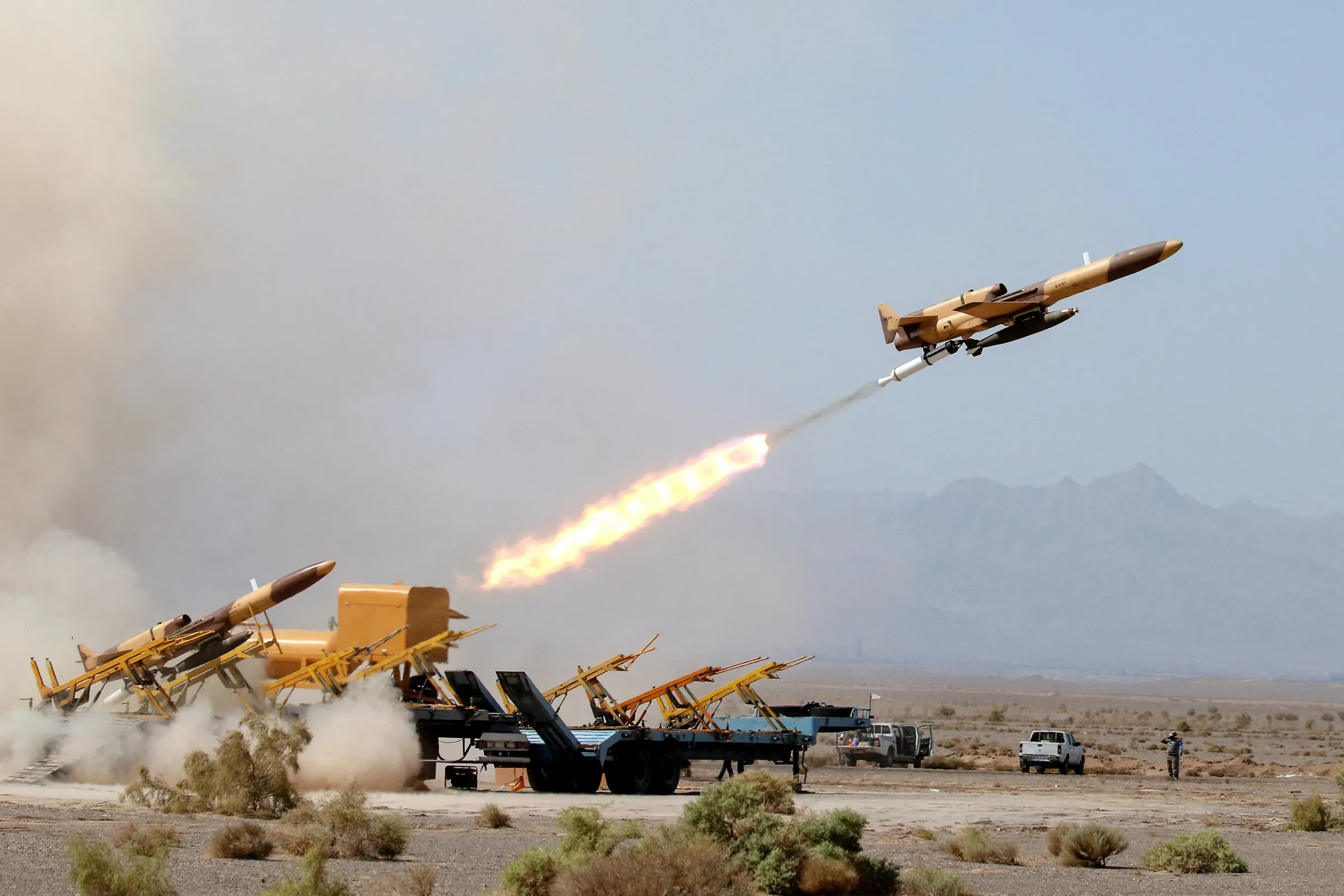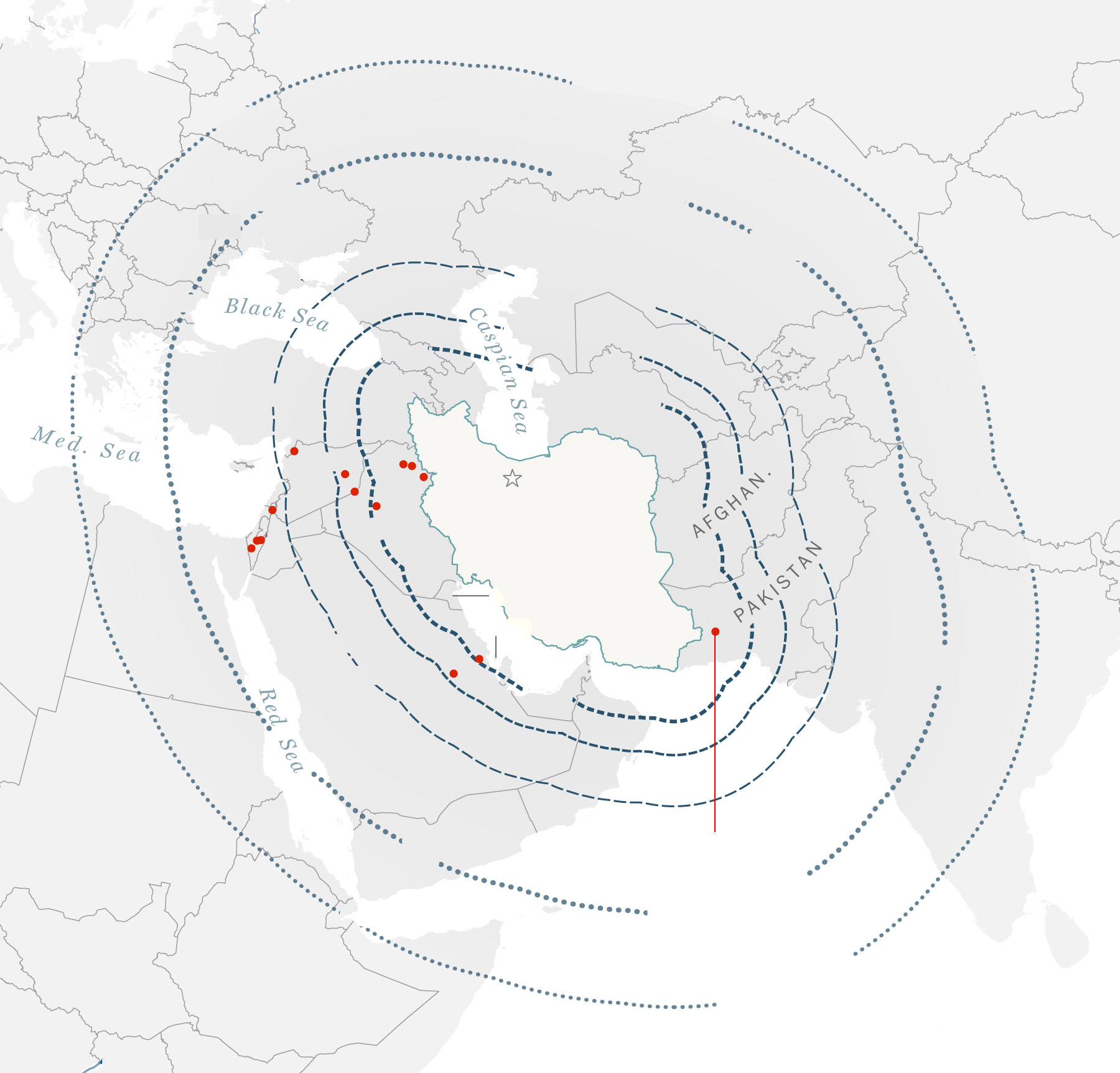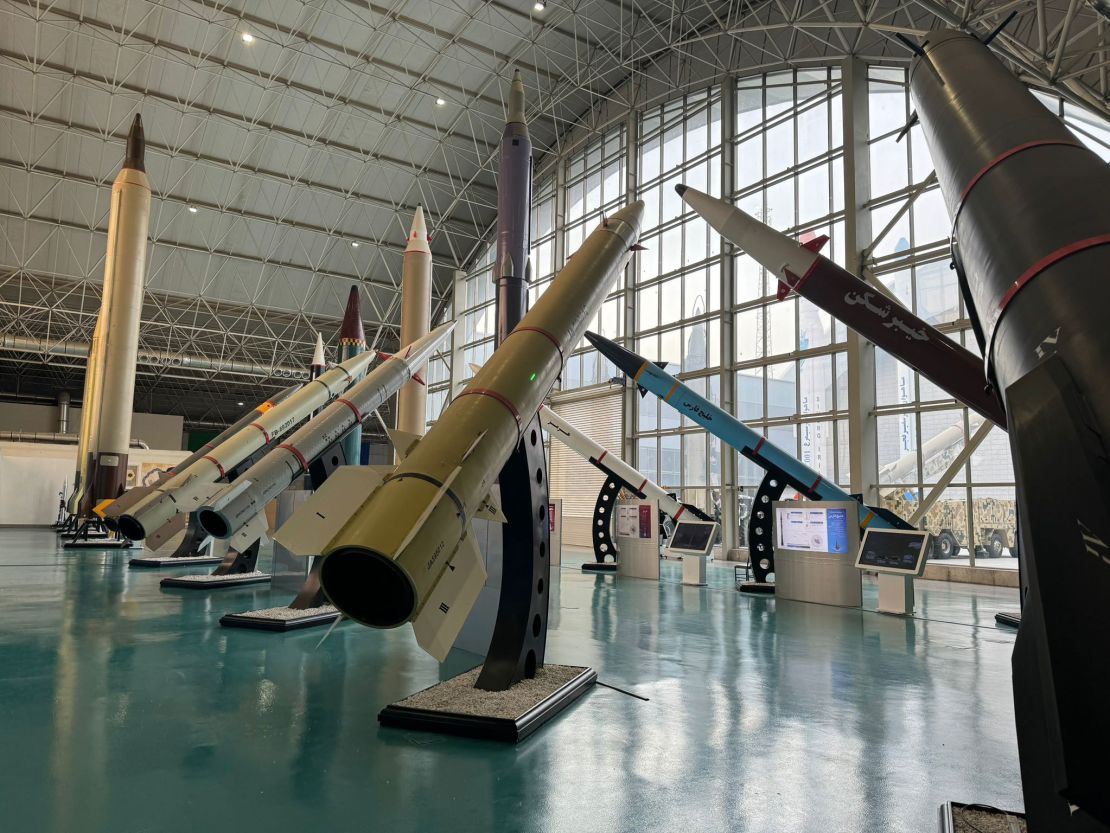Iran's Missile Might: Unpacking Its Ballistic Arsenal
Table of Contents
- The Scale of Iran's Ballistic Missile Arsenal
- Diversity and Evolution: A Growing Threat
- Key Missile Systems: The New Generation
- Strategic Deployment and Infrastructure
- Iran's Stated Purpose: Deterrence and Retaliation
- The Ongoing Assessment of Iran's Missile Capabilities
- Navigating the Complexities of Iran's Missile Power
The Scale of Iran's Ballistic Missile Arsenal
When addressing the question of how many ballistic missiles does Iran have, the numbers paint a stark picture of a nation that has heavily invested in this particular military capability. According to available data, **Iran has over 3,000 ballistic missiles**, a figure that firmly establishes it as possessing the largest arsenal of its kind in the Middle East. This sheer volume is a testament to Iran's long-term commitment to developing a robust deterrent force. The exact count can fluctuate, and various estimates exist. For instance, according to the commander of US Central Command, General Kenneth McKenzie, Iran had "more than 2022 ballistic missiles in 3000." This statement suggests a range or an evolving count, indicating that while the number exceeds 2,000, it is actively approaching or has surpassed the 3,000 mark. Regardless of the precise digit at any given moment, the consensus among experts is that Iran's ballistic missile program is the biggest in the Middle East. This significant numerical advantage provides Iran with a strategic depth that few other regional actors can match, allowing it to project power and deter potential adversaries across a broad geographical expanse. The strategic implications of such a vast inventory are profound, influencing regional security dynamics and shaping the foreign policy considerations of nations far beyond its immediate borders.Diversity and Evolution: A Growing Threat
Beyond mere numbers, the strength of Iran's missile program lies in its remarkable diversity and continuous evolution. **Iran possesses the largest and most diverse missile arsenal in the Middle East**, encompassing thousands of ballistic and cruise missiles. This diversity means Iran isn't reliant on a single type of weapon system, enhancing its flexibility and resilience in various operational scenarios. The arsenal includes a wide array of systems, each designed for different ranges, payloads, and targets, making it a multifaceted threat. For the past decade, Iran has invested significantly to improve these weapons’ precision and lethality. This commitment to enhancement goes beyond simply increasing the quantity of missiles; it focuses on making each missile more effective. Improvements in guidance systems, warhead design, and propulsion technology mean that Iran's missiles are not just numerous but also increasingly accurate and destructive. Such developments have made Iran’s missile forces a potent instrument of national power, capable of delivering a significant punch. This ongoing modernization effort underscores Iran's determination to maintain a qualitative edge in its missile capabilities, ensuring they remain a credible deterrent and a viable retaliatory option. The continuous refinement of these systems demonstrates a strategic foresight aimed at maximizing their impact on the battlefield and in geopolitical calculations.Reaching Far: Range Capabilities
A critical aspect of Iran's missile arsenal is its impressive range, which extends its potential reach far beyond its immediate borders. Some of Iran's missiles are capable of striking as far as Israel and Southeast Europe, demonstrating a strategic capability that demands attention from a wide array of international actors. This extended reach fundamentally alters the security calculus for many nations, highlighting the potential for regional conflicts to have far-reaching consequences. While many of Iran's missiles, such as those within the newer generations, have a stated range of 1,250 miles, experts believe Iran could quickly adapt and deploy ballistic missiles with significantly longer reach. This assessment is based on Iran's demonstrated engineering capabilities, its ongoing research and development, and its historical trajectory of missile development. The ability to rapidly extend range capabilities means that the current known ranges may not represent the full extent of Iran's potential threat radius. This latent capability adds another layer of complexity to assessing Iran's overall missile power, as its future reach could expand even further, posing a challenge to a broader spectrum of targets and requiring continuous monitoring and strategic adjustments from global defense planners.Key Missile Systems: The New Generation
Iran's commitment to advancing its missile technology is perhaps best exemplified by its newer generations of missiles, which incorporate advanced features and capabilities. Among these, the Khaibar Shekan family stands out. This family, including the Khaibar Shekan 1 and 2, represents a significant leap forward, as these missiles are powered by solid propellant. The use of solid propellant is a crucial development because it allows for quicker deployment and reduces the detection window, making the missiles less vulnerable to pre-emptive strikes and more responsive in a crisis. Unlike liquid-fueled missiles, which require a lengthy and observable fueling process, solid-propellant missiles can be stored ready to fire, dramatically shortening their launch preparation time. Another notable addition to Iran's arsenal is the Fattah 1. This missile has been described by Iranian sources as the country’s first hypersonic missile. If verified, a hypersonic missile would represent a revolutionary capability, as such weapons can travel at speeds exceeding Mach 5 and maneuver in flight, making them extremely difficult to intercept with current missile defense systems. However, it is important to note that such claims remain unverified by independent international experts. Despite the unverified status, the mere claim indicates Iran's ambition and focus on developing cutting-edge missile technologies. These new systems, whether fully proven or still in development, underscore Iran's continuous effort to enhance its missile forces, ensuring they remain a potent and evolving element of its strategic posture.Strategic Deployment and Infrastructure
The effectiveness of Iran's ballistic missile arsenal is not solely dependent on the number and quality of its missiles but also on its sophisticated deployment infrastructure. Iran has at least 24 identified missile sites in the western half of the country, spread from north to south. This widespread distribution is a deliberate strategic choice, designed to enhance the survivability of its missile forces against potential attacks. By dispersing its sites across a wide geographical area, Iran makes it significantly harder for an adversary to neutralize its entire missile capability in a single, concentrated strike. The nature of these sites also varies. Some of these sites appear to be independent, suggesting isolated launch facilities or storage bunkers designed for individual operations. Others are arranged in clusters, indicating larger, more integrated complexes that might house multiple missile types, command and control centers, or extensive support infrastructure. This combination of independent and clustered sites provides Iran with both redundancy and flexibility. The ability to launch from various locations, some potentially mobile or concealed, adds another layer of complexity for intelligence gathering and targeting by adversaries. This robust and dispersed infrastructure is a critical component of Iran's deterrence strategy, ensuring that even under attack, a significant portion of its missile capability would remain intact and ready for retaliation. A photo by Hossein Beris/Middle East Images/AFP via Getty Images, for example, might capture the visual elements of such a sprawling and complex military network, though the specific image is not provided for analysis here.Iran's Stated Purpose: Deterrence and Retaliation
Iran consistently states that its ballistic missiles are an important deterrent and retaliatory force against the United States, Israel, and other potential regional targets. This official narrative frames the missile program as purely defensive, designed to safeguard Iran's sovereignty and national interests against perceived threats. From Tehran's perspective, a robust missile arsenal is essential to prevent aggression and to ensure that any attack on its territory or interests would be met with a swift and painful response. This deterrence strategy is central to Iran's national security doctrine, especially given its geopolitical environment. Crucially, Iran denies seeking nuclear weapons, asserting that its missile program is conventional and serves only defensive purposes. This distinction is vital in international discourse, as it seeks to alleviate concerns about nuclear proliferation while still maintaining a formidable conventional deterrent. The development of precision and long-range missiles, therefore, is presented not as an offensive capability aimed at conquest, but as a means to ensure the security and stability of the Iranian state in a volatile region. This stated purpose underpins Iran's rationale for its continued investment in and expansion of its missile forces, positioning them as a cornerstone of its self-defense strategy.The Role of Missiles in Regional Confrontations
The practical application of Iran's missile capabilities often comes into sharp focus during regional tensions and conflicts. For instance, Iran fired a salvo of ballistic missiles at Israel on a Tuesday, in retaliation for Israel’s campaign against Tehran’s Hezbollah allies in Lebanon. This event drew on an array of weapons that has long been developed and showcased the operational readiness and strategic utility of Iran's missile forces. Such actions demonstrate that these missiles are not merely for show or deterrence but are actively integrated into Iran's response options during crises. Conversely, Israel has attacked Iran's ballistic missile programme, which experts believe is the biggest in the Middle East. These strikes highlight the perceived threat posed by Iran's arsenal and the ongoing efforts by adversaries to degrade its capabilities. Despite such attempts, depending on the effectiveness of Israeli strikes on missile sites, Iran’s ballistic capability may still be its most effective option for striking back. This underscores the resilience of Iran's dispersed and diverse missile infrastructure and its importance as a retaliatory tool, even when under pressure. The back-and-forth actions underscore the critical role that ballistic missiles play in the broader regional power dynamics and the strategic calculations of all parties involved.Speed and Immediacy: A Time-Sensitive Threat
The speed and immediacy with which Iran's missiles can reach their targets add another layer of complexity and urgency to the regional security landscape. As Israel braces for a second attack, understanding Iran’s missile and drone capabilities becomes paramount. The timelines involved are stark: Iran’s ballistic missiles can reach Israel within 12 minutes. This incredibly short flight time leaves very little warning or reaction time for defense systems, making them a particularly challenging threat to counter. In comparison, cruise missiles would take approximately two hours to reach Israel, and drones even longer. While cruise missiles and drones offer different operational advantages, the rapid strike capability of ballistic missiles makes them uniquely impactful for swift retaliation or first-strike scenarios. This minimal flight time significantly compresses decision-making cycles for targeted nations, demanding highly advanced early warning systems and rapid response protocols. The immediacy of the ballistic missile threat underscores why nations like Israel invest heavily in multi-layered missile defense systems, constantly adapting to the evolving capabilities of Iran's arsenal.The Ongoing Assessment of Iran's Missile Capabilities
The question of how many ballistic missiles does Iran have is not static; it is a dynamic assessment that requires continuous monitoring and analysis by intelligence agencies and defense experts worldwide. As previously noted, experts believe Iran's ballistic missile program is the biggest in the Middle East, a status that is maintained through ongoing development and strategic investment. Iran's opportunities over the past decades, particularly during periods of international isolation, have seemingly been leveraged to prioritize and accelerate its indigenous missile production and technological advancements. This has allowed Iran to build a self-sufficient industry, less reliant on external suppliers, which further complicates efforts to curb its program. The continuous evolution of Iran's missile arsenal, marked by advancements in precision, range, and the introduction of new missile types like the Khaibar Shekan family and the Fattah 1, necessitates a constant re-evaluation of its capabilities and implications. What you need to know is that this isn't a fixed threat but one that adapts and grows. The unverified claims of hypersonic missiles, for instance, even if not yet fully realized, signal an ambitious trajectory that could fundamentally alter future defensive strategies. Therefore, understanding Iran's missile strength involves not just counting current numbers but also projecting future capabilities based on observed trends and stated ambitions. This ongoing assessment is critical for regional stability and for informing the defense postures of nations potentially within Iran's missile range.Navigating the Complexities of Iran's Missile Power
The extensive and continually evolving nature of Iran's ballistic missile arsenal presents a multifaceted challenge to regional and global security. The sheer scale of its inventory, with **Iran having over 3,000 ballistic missiles**, combined with the diversity and increasing sophistication of these weapons, firmly establishes Iran as a formidable missile power. From the strategic deployment across numerous sites to the development of advanced systems like the solid-propellant Khaibar Shekan and the claimed hypersonic Fattah 1, Iran has meticulously built a force designed for deterrence and rapid retaliation. Understanding how many ballistic missiles does Iran have goes beyond a simple tally; it involves appreciating the strategic doctrine behind their development, their role in regional confrontations, and the short flight times that underscore their immediate threat. Iran's stated purpose of deterrence, while denying nuclear ambitions, positions its missile program as a defensive necessity. However, the operational use of these missiles in response to perceived aggressions, coupled with their increasing reach and precision, ensures that they remain a primary concern for its adversaries and the international community. The ongoing assessment of these capabilities is therefore crucial for navigating the complex geopolitical landscape of the Middle East and beyond.Conclusion
In conclusion, Iran's ballistic missile arsenal is undeniably the largest and most diverse in the Middle East, a testament to decades of strategic investment and indigenous development. With estimates placing its inventory at over 3,000 missiles, including advanced systems capable of reaching significant distances and delivering precise strikes, Iran possesses a potent force designed for deterrence and retaliation. The continuous advancements in missile technology, coupled with a robust and dispersed infrastructure, underscore Iran's commitment to maintaining this critical component of its national defense. The implications of Iran's missile might are profound, influencing regional power dynamics and demanding constant vigilance from international actors. As this capability continues to evolve, so too will the strategic calculus for all parties involved. What are your thoughts on the implications of Iran's growing missile capabilities for regional stability? Share your insights in the comments below, or explore our other articles on Middle Eastern geopolitics to deepen your understanding of these complex issues.- Gali Golan Leaked
- Zeeba Kalan Onlyfans
- Brandy Billy Leaked Onlyfans
- Anjali Arora Mms Viral
- Farrah Fawcett Playboy

Russia seeking hundreds of ballistic missiles from Iran in 'full

What Iran’s attack on Israel revealed about its weapons arsenal - The

Israel-Iran news: CNN gets a rare look at the Iranian missiles and